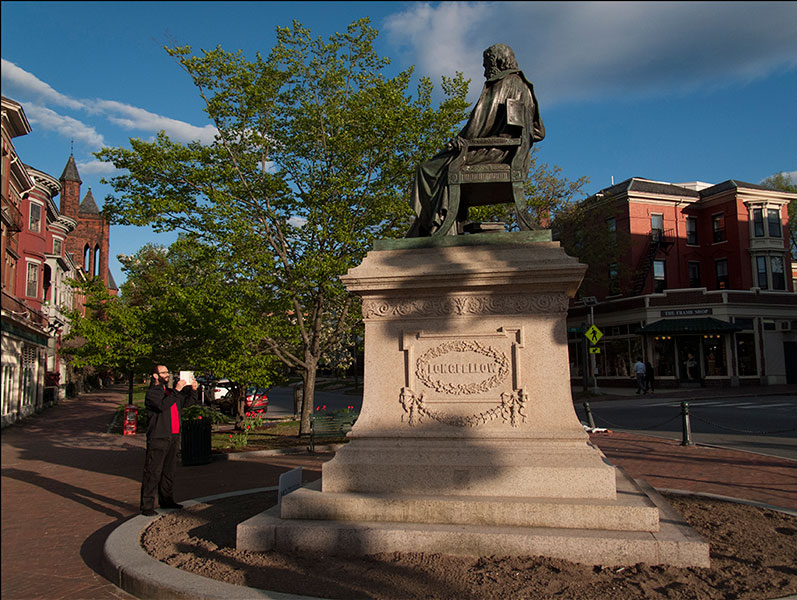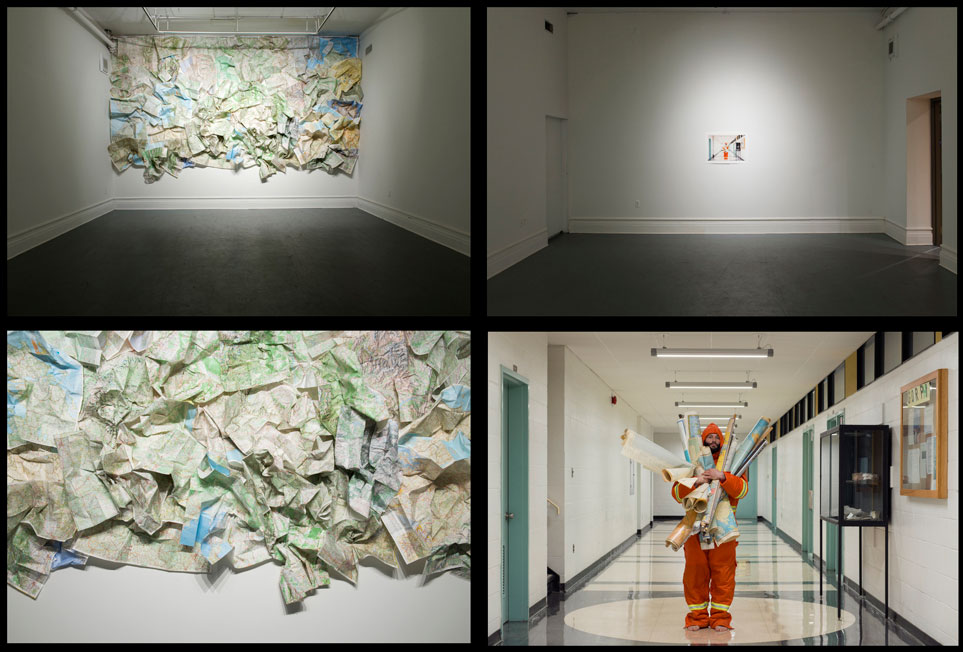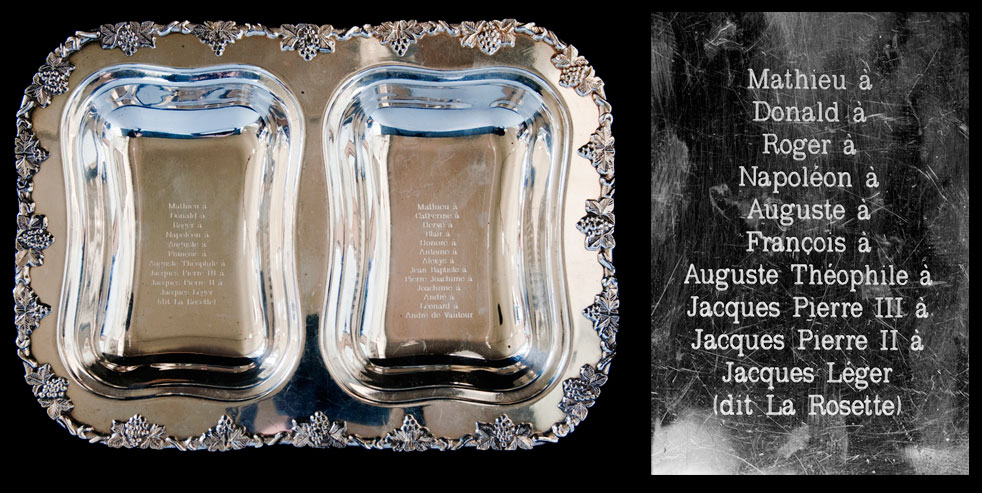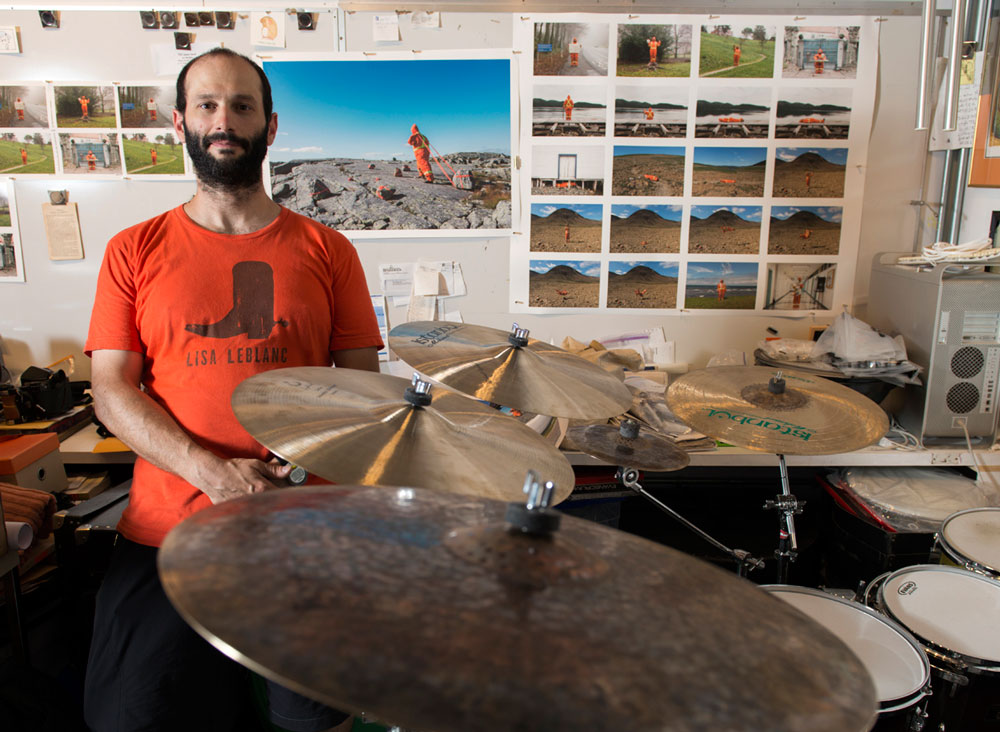If you are ever looking for Mat Léger at one of his exhibition openings, just look for the only Acadian wearing a kilt.
“It’s practical and comfortable,” he says. “There’s also some Celtic genes. Great-grandmother on my Dad’s side.”
As a self-described “serial artist-in-residence,” Moncton-based Léger is the antithesis of a stay-at-home creator. He has spent more than a decade travelling to different parts of the globe to mine local environments for creative ideas: since 2000 he has left his artistic mark on Canadian cities stretching from Banff, Alberta, to Corner Brook, Newfoundland, and travelled to the United States, Switzerland, France and Finland.
Later this year, he will be heading to Brussels, Belgium; he has already scheduled residencies for 2017 in Graz, Austria, and Berlin, Germany. More importantly, he is part of a wave of recent Acadian artists who, while articulating aspects of their cultural identity, attempt to situate that identity within the context of other cultures and landscapes.
Although born in Moncton, Léger grew up in the small town of Ste. Marie-de-Kent. And it was there that he began to experiment with materials and space.
“Our house was always being renovated,” Léger says. “So there was always scrap lying around. We also didn’t have much money for toys, so I used to build a lot of stuff as a kid.”
But the young Léger never thought of himself as a future artist. In fact, when he first enrolled at Université de Moncton in the 1990s, it was to become a percussion major. But after he completed his second year of studies, he borrowed his father’s old Agfa camera and hitchhiked across Canada. He returned to Moncton at the end of summer and promptly enrolled in a photography course; he was required to take a second studio course, so he also signed up for sculpture. Coincidentally, it was during his sculpture course that he discovered the work and performance actions of German artist Joseph Beuys.
The result is a multidisciplinary artist who draws on his knowledge of photography, sculpture and performance to create pieces that resist traditional expectations of aesthetic production and consumption. That is, rather than churning out countless objects or sticking to one kind of sculpture to assure financial success, his work tends to favour the fleeting and temporary worlds of performance and installation.
 In his performance action Discussing Acadian Exile and Kingdom with Longfellow (2013), Mathieu Léger read excerpts from French Algerian Albert Camus’s Exile and the Kingdom to a statue of American poet Longfellow, whose 1847 poem Evangeline has been absorbed into Acadian lore. Image courtesy of the artist.
In his performance action Discussing Acadian Exile and Kingdom with Longfellow (2013), Mathieu Léger read excerpts from French Algerian Albert Camus’s Exile and the Kingdom to a statue of American poet Longfellow, whose 1847 poem Evangeline has been absorbed into Acadian lore. Image courtesy of the artist.
Léger’s primary motivation appears not so much to construct works that are passively received; instead, his art speaks to interplay and interaction—whether with people, materials or environmental conditions. This variegated, multi-faceted approach also allows him to examine more deeply the kind of themes that inform much of his recent work: temporality, identity, even the value of art. As such, his artistic output is wrapped in layers which, on the surface, often appear merely playful or humorous. But after further reflection, the initial wit melts away to reveal larger philosophical and political considerations.
In other words, it is not the heart that seems to drive Léger’s art—it is the mind that leads, offering viewers a kind of postmodern Acadian aesthetic that demands contemplation and attention rather than fleeting emotional experience.
Léger’s commitment to long-thinking and slow art is evident in his two latest projects: Methodologies for Tourists, for instance, is a series of performance pieces and exhibitions Léger began in 2012 that explores ideas around migration, displacement and territory, and will finish in 2017. His Constant Variables photography project—in which he spends two weeks each year with biologists in Protected Natural Areas of New Brunswick—isn’t slated for completion until 2032.
Linked to Léger’s long-thinking approach is his anti-consumption attitude towards art. As he has told me before, “It isn’t about selling art. It’s about making art.” And after viewing his work, one understands the motivation behind such a statement: big ideas take time to digest before they can be transmuted into something artistic.
One can also see this attitude reflected in Léger’s penchant for performance art. His actions aren’t just public spectacle—they are active moments of artistic resistance, a medium of expression that can be consumed, but not easily possessed.
 For a recent 2016 project with Galerie Sans Nom in Moncton, entitled Espace plausible / Plausible Space, Mathieu Léger created an installation and photograph that riffed on the way that maps can compress space. It’s one of Léger works dealing with distance, proximity and boundaries. Image courtesy of the artist.
For a recent 2016 project with Galerie Sans Nom in Moncton, entitled Espace plausible / Plausible Space, Mathieu Léger created an installation and photograph that riffed on the way that maps can compress space. It’s one of Léger works dealing with distance, proximity and boundaries. Image courtesy of the artist.
For example, in one of his recent actions, he read excerpts from Albert Camus’s Exile and the Kingdom to a statue of Henry Wadsworth Longfellow in the poet’s hometown of Portland, Maine. One’s initial reaction to witnessing such an event is likely bemusement. But Longfellow was the author of the imaginative Evangeline, an 1847 epic poem about the Acadian deportation that has since been appropriated by Acadians and absorbed into their cultural mythology. Moreover, the philosopher Camus—an Algerian and therefore, like the Acadians, a French outlier—is perhaps best known for his articulations of ideas around revolt and absurdity.
And so is Léger, a “real” Acadian, lecturing this representation of Longfellow about the true motivations of Acadians? Is Léger saying something about the wrongful reifying of a figure like Longfellow? Is he making a political statement about the people our civic bodies choose to memorialize? Perhaps all of these.
But beyond such possibilities is the realization that it is not Léger who necessarily looks absurd to onlookers: Léger’s self-reflexive action draws attention to the absurdity of advocating for such public monuments in the first place, to the frequent misreading of those who are different from us, and to the sometimes limited cultural value of such objects, especially in the face of lived experience.
Nor are Léger’s Acadian roots free from such interrogations.
For instance, a silver plate inscribed best deportation ever is included in Léger’s touring exhibition “On a Silver Platter,” which consists of a series of silver plates inscribed with words and sayings linked to his family, his community and the art world. It’s a wonderfully rendered ironic comment about a foundational moment in Acadian history.
Another of his silver plates, with an engraved phrase that begins Mathieu à Donald à Roger à Napoleon, speaks to the importance of genealogy and connection, although, in a playful twist, he chooses to emphasize the more personal connection between first names. On one level, such a decision speaks to his sense of connection to his familial past rather than a larger, mythological one; read another way, however, Léger is drawing our attention to the historical constraints of the church’s emphasis on patrilineal power.
 Mathieu Léger’s series Sur un plateau d’argent / On a Silver Platter (2012) engraves metal trays with culturally coded phrases to address history, culture and contemporary art in Canada. This particular one addresses ideas of lineage.
Mathieu Léger’s series Sur un plateau d’argent / On a Silver Platter (2012) engraves metal trays with culturally coded phrases to address history, culture and contemporary art in Canada. This particular one addresses ideas of lineage.
Another of Léger’s recent performance pieces, in which he walked around the Musée Acadien in Moncton for several days in order to create an imprint on the ground around the building, is likewise an ambivalent action that can be read as a positive, perfect and wholesome symbol of Acadian community, yet equally as a criticism of Acadie’s cultural insularity.
Léger’s recent art, then, is less about affirming and re-inscribing Acadian cultural identity than it is about interrogating traditional or established tropes.
This is not to say, however, that Léger’s art is inaccessible to non-Acadians. On the contrary, while Léger’s work is informed by his Acadian roots, it is worth reminding viewers that his art speaks to more than one cultural group.
Indeed, Léger’s pieces speak directly to the ongoing 21st-century tensions we are now witnessing in places like England, France and the United States between those who argue for traditional national identities and the chorus of those who declare themselves part of a global community. Léger’s work embodies such issues: it is one artist’s attempt to navigate the divergent space between belonging and diaspora, to express the paradoxical relationship of what it means to be part of a cultural group that is both local and international. And so it is not surprising that his work has found ready audiences and gallery space in France and Prince Edward Island, in Winnipeg and in Maine.
At its core, Mathieu Léger’s art is an expression of the human desire for physical connections and boundaries in a world that has become increasingly virtual and boundless.
Thomas Hodd is a cultural critic and associate professor of Atlantic literature at Université de Moncton. Mathieu Léger’s upcoming exhibitions include “On a Silver Platter,” University of Maine Museum of Art; “Methodologies for Tourists,” St. Francis Xavier University Art Gallery; The Distance Between Us, Wandering Arts Biennial, Brussels, Belgium; “Methodologies for Tourists,” Panache Art Actuel, Sept Iles; “Methodologies for Tourists,” Voix Visuelle, Ottawa.
This article is part of Canadian Art’s year-long Spotlight on New Brunswick series, created with the support of the Sheila Hugh Mackay Foundation.










